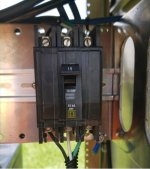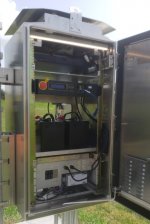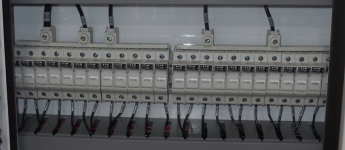Cjmccarthy
Member
- Location
- Florida
- Occupation
- Project Coordinator FDOT
This is in a FDOT cabinet, it is a 120v 15amp breaker. is this NEC compliant being mounted on a din rail with no protection? Below is the picture of the circuit breaker and the cabinet it is in. These are FDOT cabinets that are along the roadway and they are locked, so the only person that can access it is an FDOT representative.








